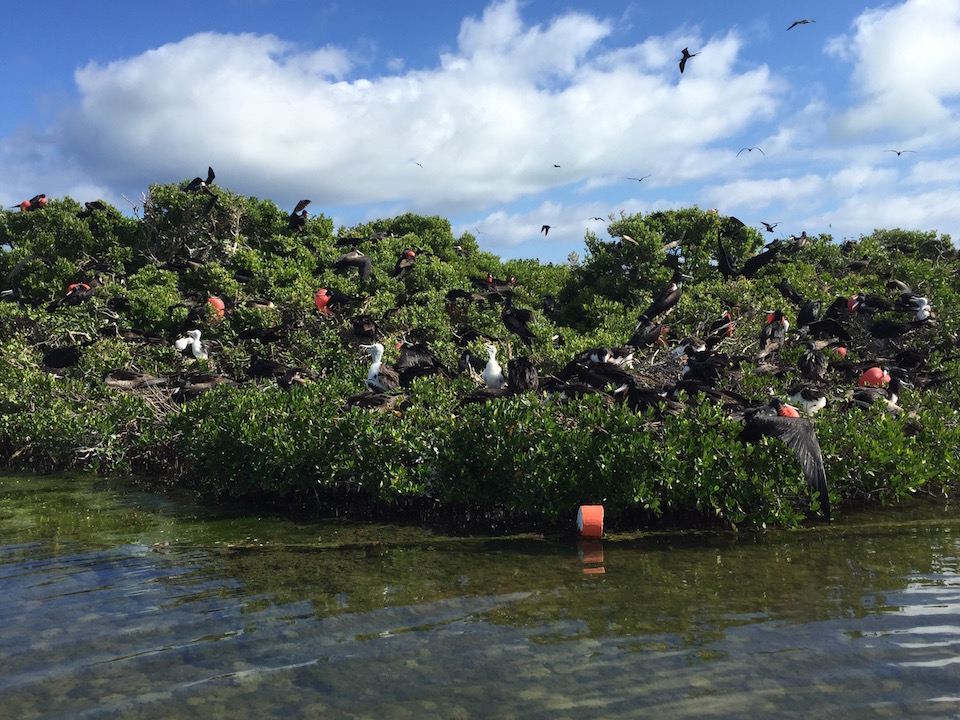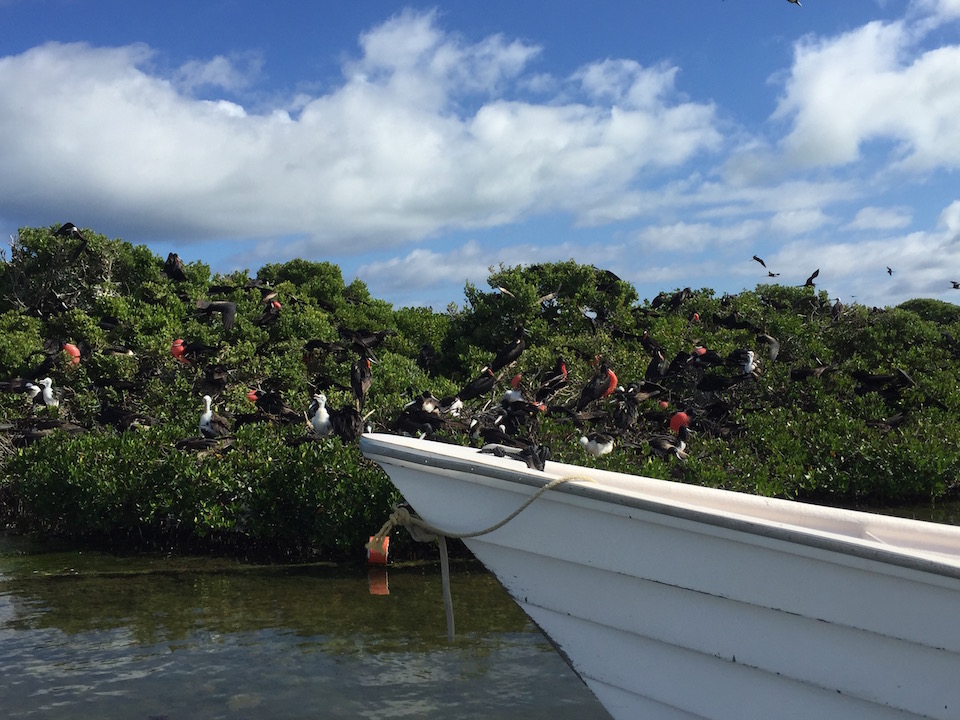A one-of-a-kind sanctuary
By Sarah Greaves-Gabbadon
CJ Travel Editor
It’s a couple of weeks after the holidays and at first sight, the mangrove appears to be festooned with scarlet Christmas tree balls. But as our boat inches closer, I realize that what I’m seeing is the red throat pouch of male frigate birds, proudly inflated to entice the females with whom they hope to mate.
Vere, a fisherman, is our guide here on Barbuda as we explore the Frigate Bird Sanctuary in the Codrington Lagoon on the island’s northwest coast. As he expertly navigates the saltwater (punctuated with green islets that look like clumps of moss you’d see in a terrarium) Vere gives us the lowdown on Fregata Magnificens, the majestic birds that roost here in the only such sanctuary in the Caribbean, also one of the largest in the world.
He explains how, during the August-to-February mating season, the bushes are ablaze with more than 5,000 of the birds locals call Man-o-War, their crimson throat pouches adding pops of contrast to the lush green mangroves in which they roost. While the female frigates live here year-round, the males only return at breeding time. Once they’ve mated, it’s the males who then stay with nest and protect the white-headed juveniles while the females fly off to find food.
Vere tells us that you can’t distinguish male from female frigates until they’re about two years old, and how they can live for up to 50 years. “They can fly for a as long as a month without landing,” Vere says, explaining how they feed by swooping down into the water to snag the flying fish and jack that swim near its surface. “But it’s trouble if they fall in; their heavy wings make it hard to get back up into the air.”
They certainly don’t seem to be having any flight issues now, as they soar and dip above our heads, swooping in and out of the foliage like fighter pilots. But here on Barbuda, the wide-winged wonders are making love, not war. And I feel like the luckiest voyeur.









